 Feature
Feature

Darrin Gartrell’s ’55 Chevy 210 Has a Unique Powerplant
BY Shawn Brereton  Photography by THE AUTHOR
Photography by THE AUTHOR
he car show portion of the Tri-Five Nationals in Bowling Green, Kentucky, never ceases to amaze. How in the world can a car event — featuring what is essentially three models — still show us something completely new? The August 2022 version sure had its fair share of standout rides with gleaming paintjobs, sparkling chrome, and buttery smooth interiors, but this ’55 Chevy 210 stood out for a very different reason.
It wasn’t outlandish. The PPG red and black paint seemed flawless, the fit and finish were close to perfection, and the interior was a light gray custom leather Ron Mangus masterpiece. However, it was in the engine bay where things went beyond understanding. Ladies and gentlemen, this ’55 was packing an LS but it had two extra cylinders. Yes, a GM LS V-10!

It turns out sometime around 2008, amid GM’s financial woes, they scuttered a large number of projects. Everything was sold off as scrap and slated for destruction. Some enterprising individuals recognized this gem sitting among the junk as something unique and worth saving. The whole pile was purchased and loaded on the spot before it could escape. After not being seen again for several years, the engine finally surfaced and Darrin bought it.
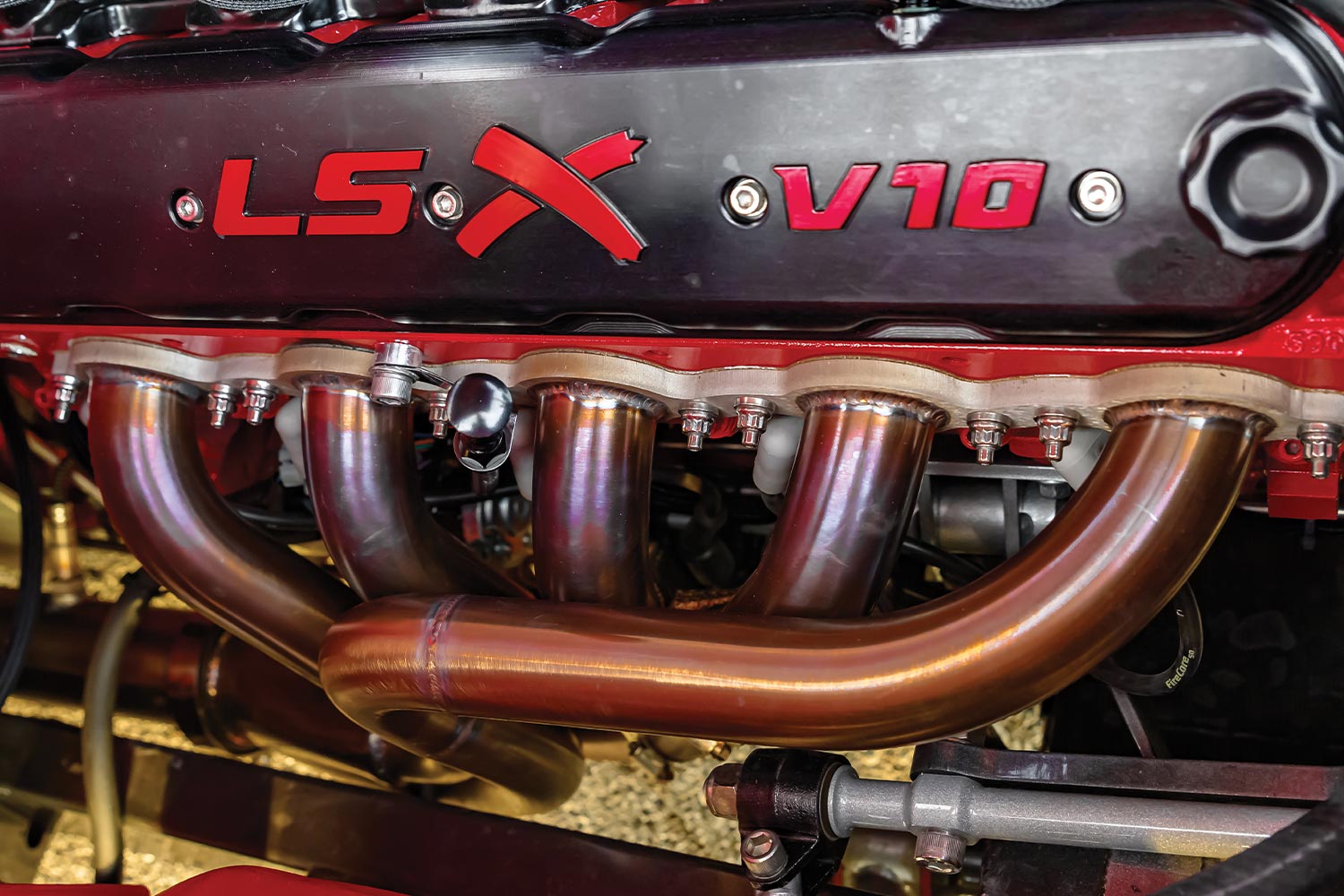
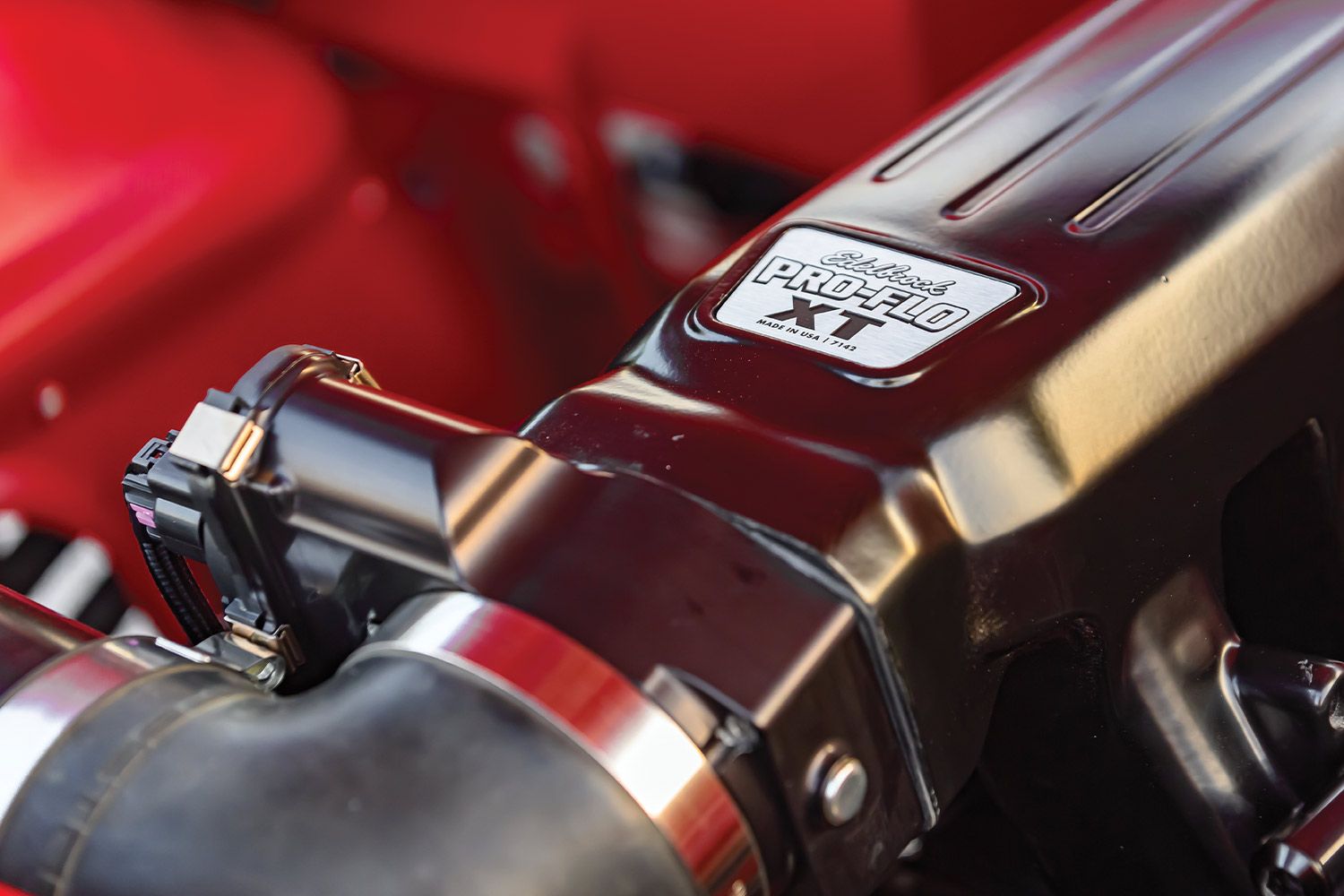
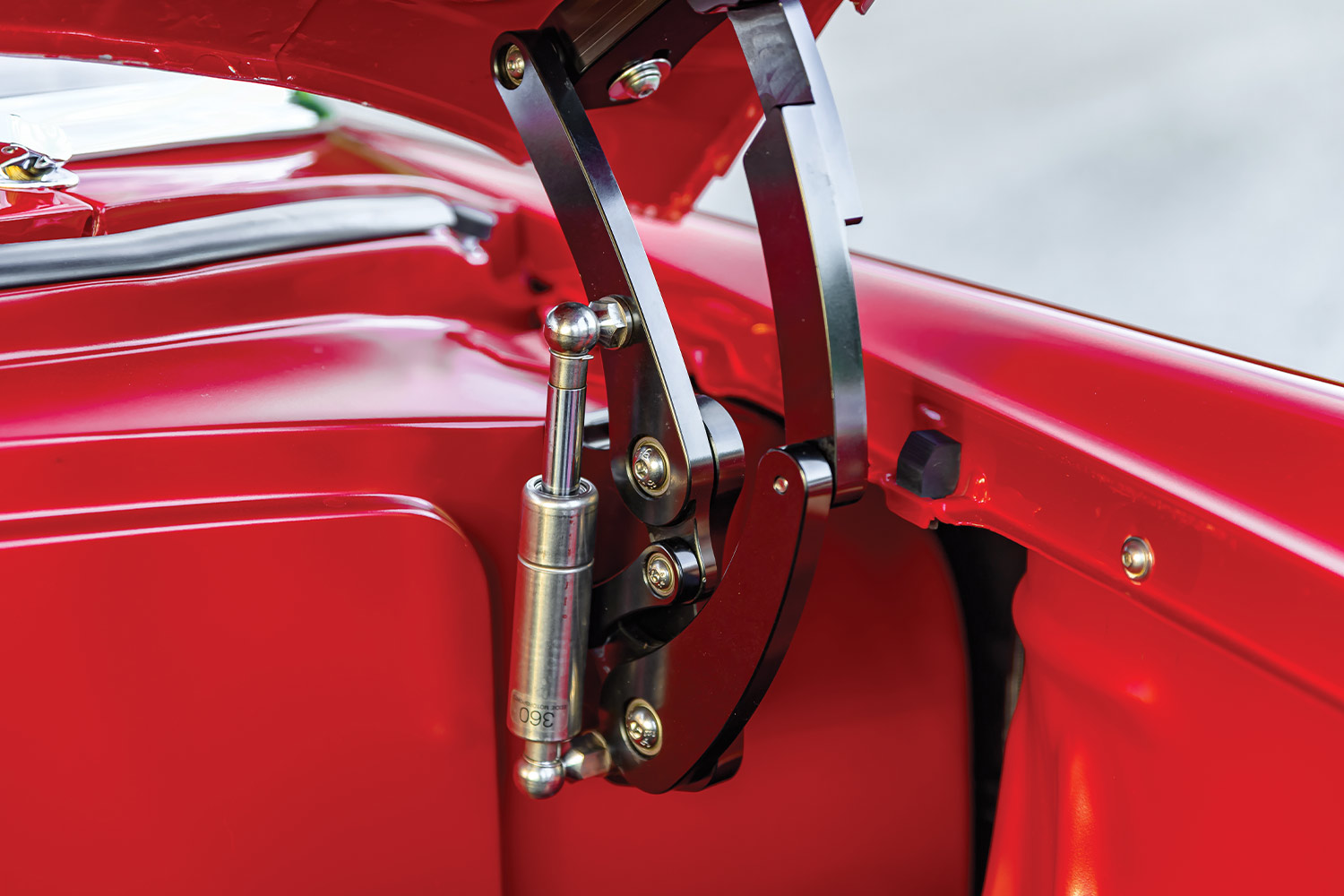
While several articles were written about these elusive V-10 engines, no one really knew much about them or their design. Darrin had plans to add power, so he sent the cam off to Billy Godbold at Comp Cams to study and make blanks for the inevitable upgrades. Once he was done, John Bewley at Full Proof Performance worked his magic, spec’ing out the cam upgrade. Meanwhile, the factory crank was sent off to be studied and reverse engineered. Darrin shipped the cylinder heads (which resemble a factory L92 head in port design) off to Gavin Simcoe for some much-needed inspection and cleanup.
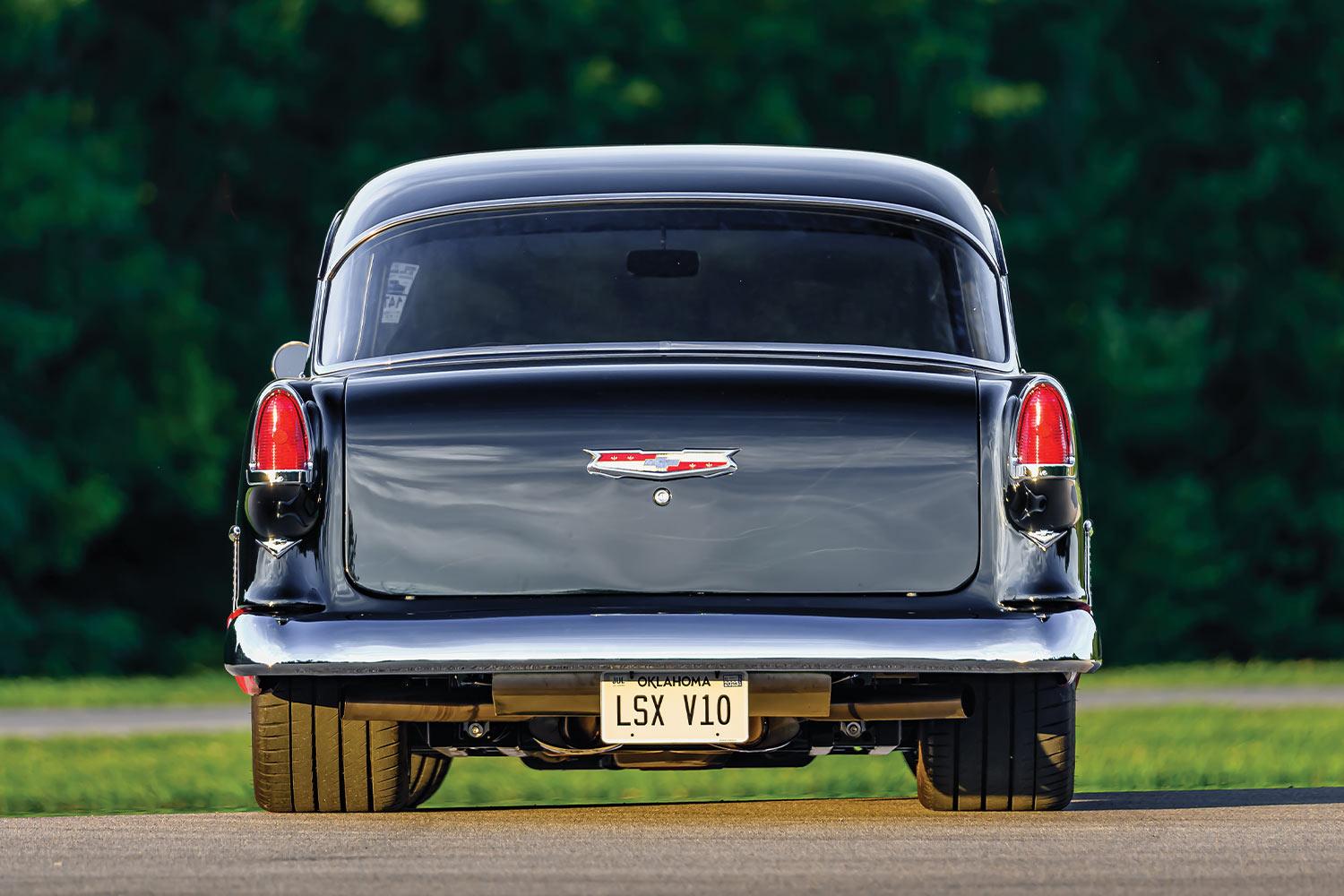
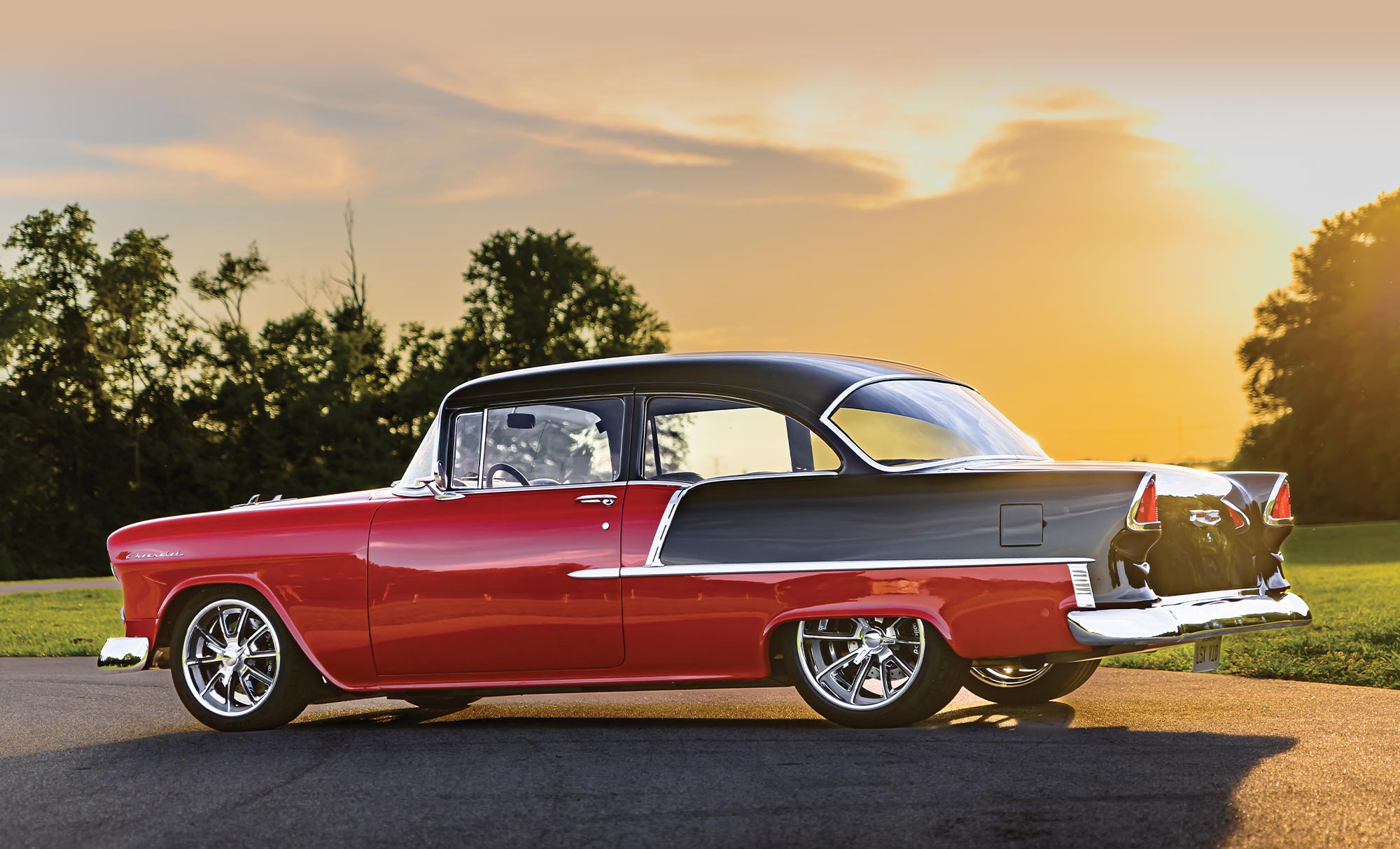
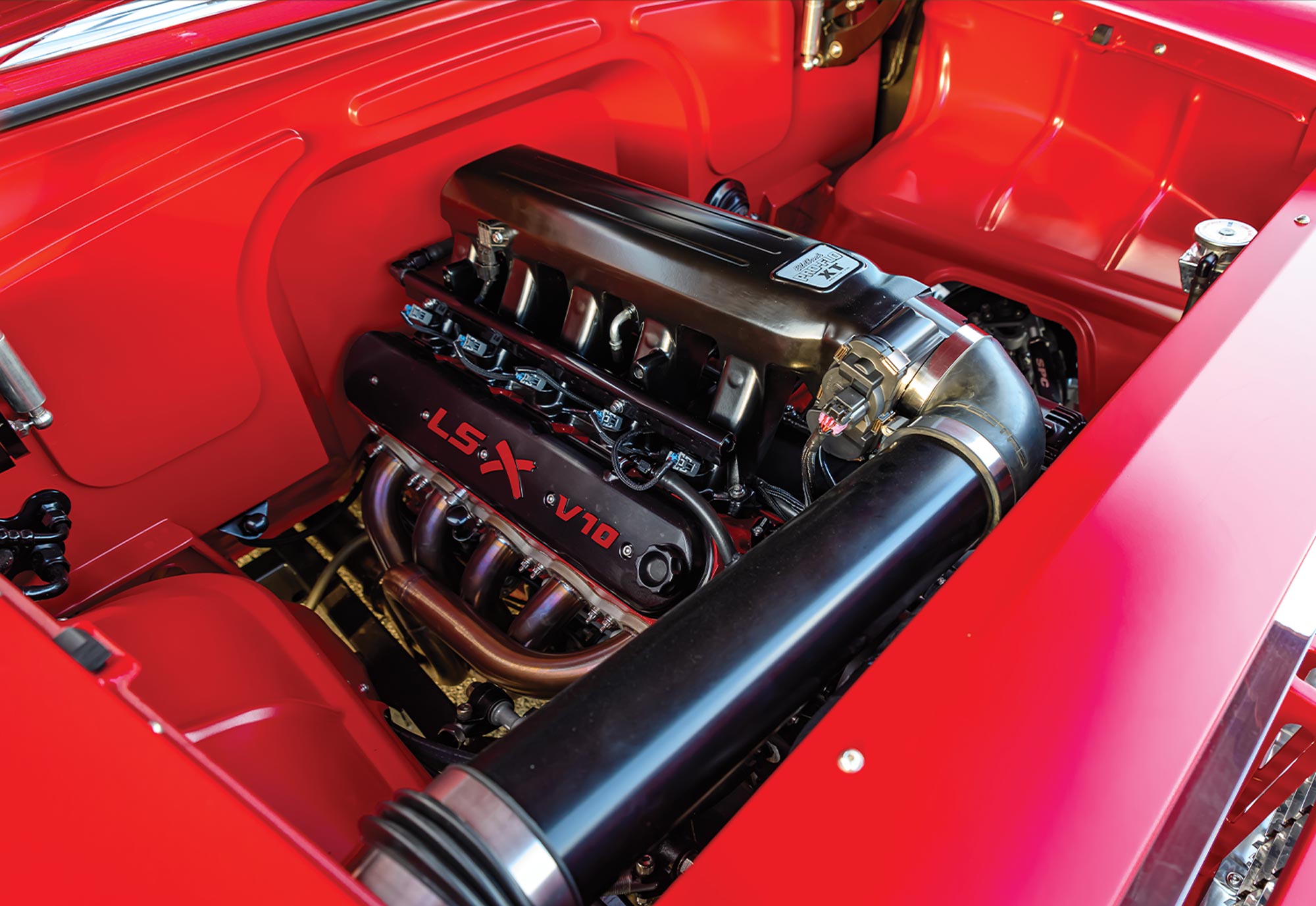
Darrin entrusted Michael Rudd at Rudd Racing Engines in Lone Grove, Oklahoma, to perform final assembly and dyno tuning. The prototype is a cast-iron Gen IV-style block with a 4-inch bore and 3.622 stroke crankshaft. After a slight cleanup, the final bore comes to 4.005 inches for a total of 456 ci. The factory crankshaft and Gen IV rods reside inside with upgraded CP-Carrillo pistons to end up with an 11.2:1 compression ratio.
While the engine came with the factory prototype dual throttle-body intake, it lacked in the upper-rpm range. It was also less than aesthetically pleasing, so Darrin cut down two Edelbrock Pro-Flo XT intakes to make one with 10 runners running a MaxxECU PRO system. Swiftek Engineering in Australia got the nod to design the custom valve covers and valley cover. Meanwhile, Chris Stewart of Stewy’s Speed Shop in Oklahoma welded those beautiful custom headers. Rick Gorski with FireCore Performance provided the excellent FireCore50 wires for this build. A Holley mid-mount accessory drive runs all the ancillaries.
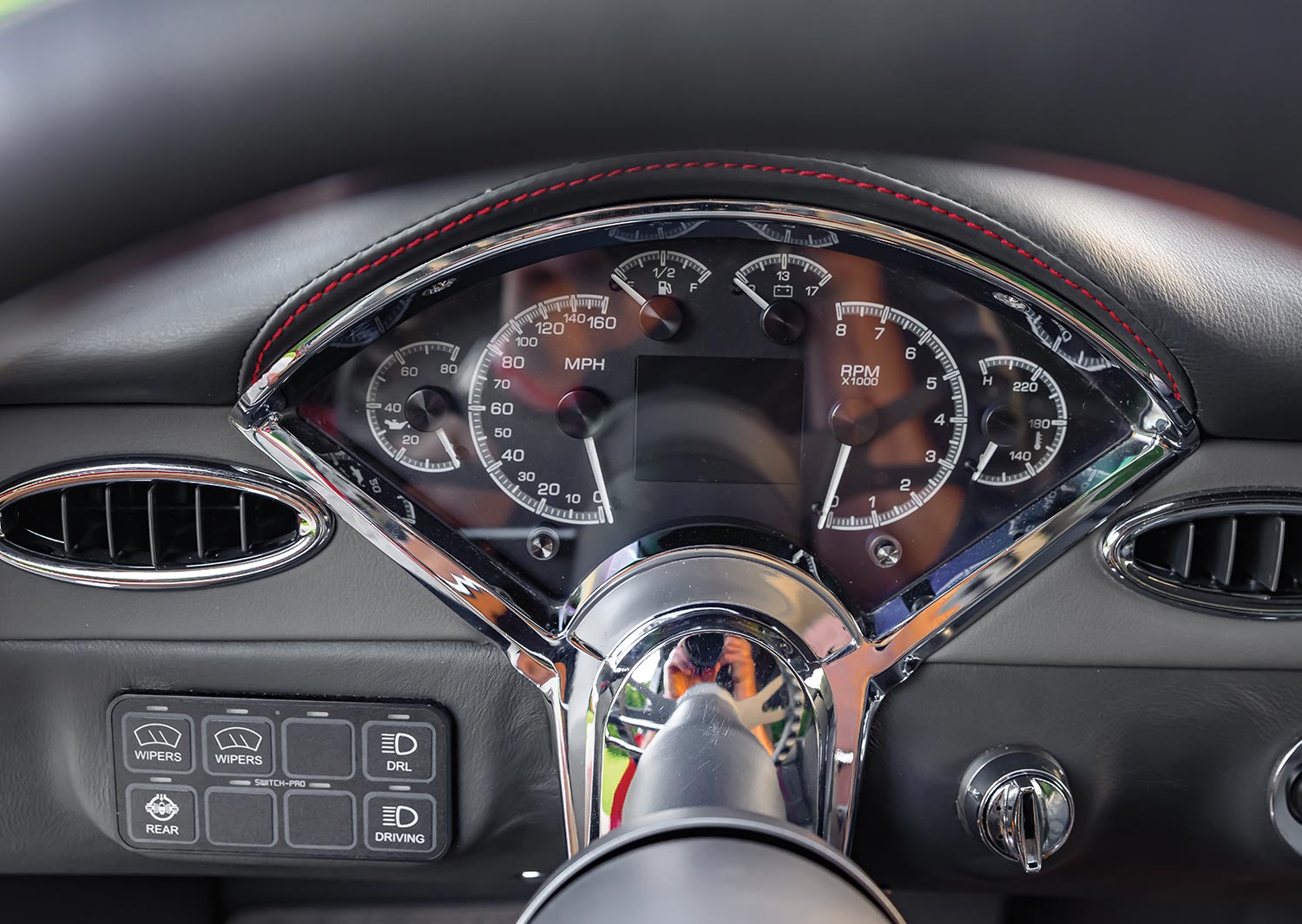

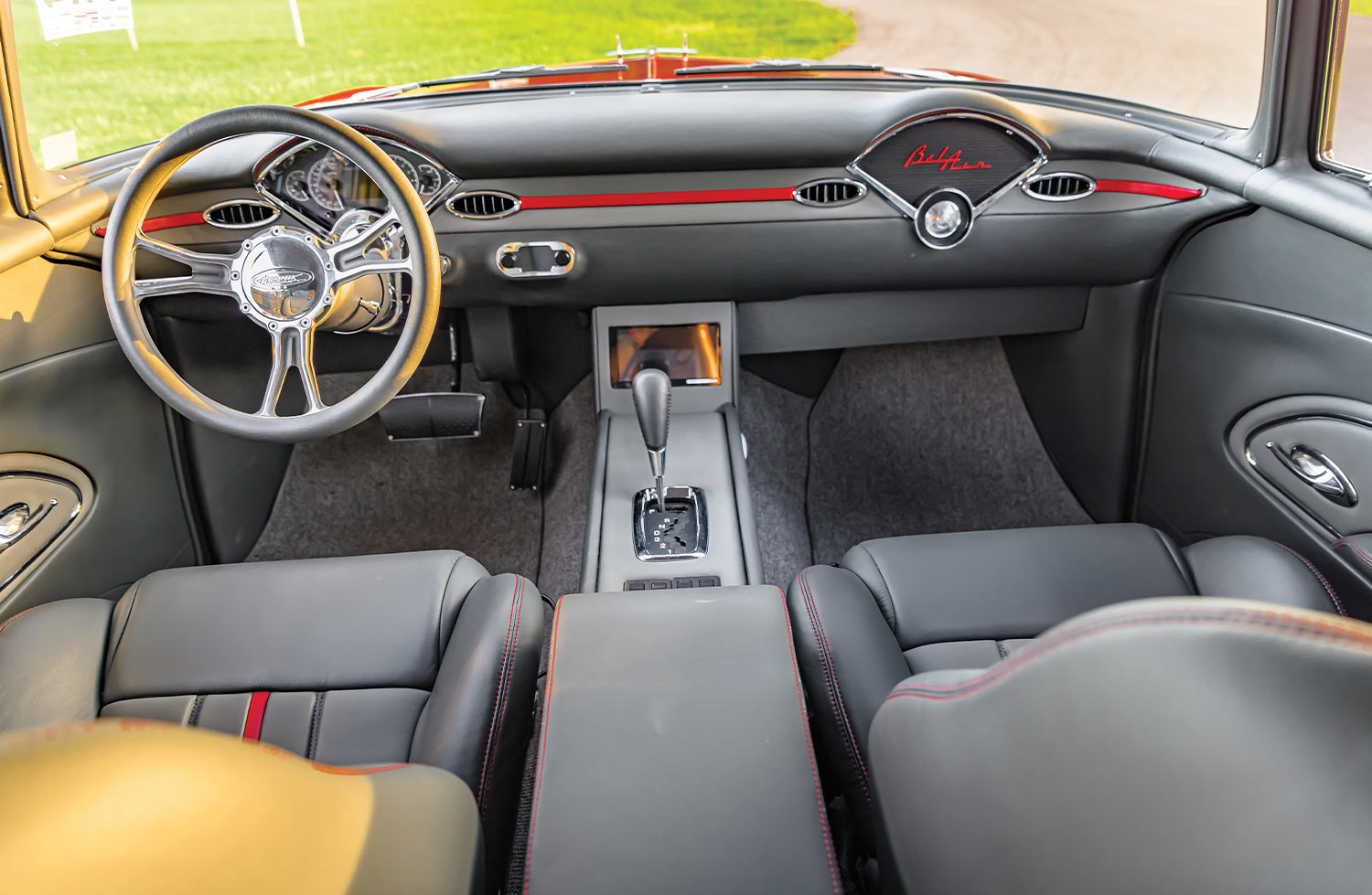
That engine now sits between the framerails of this ’55 Chevy, which started out with a good-running and driving 454ci four-speed combo. It now sports a Nerd Rods Chassis 2×4-inch boxed frame with a full-custom crossmember and control arms with QA1 coilovers and 14-inch Wilwood brakes on C4 Corvette spindles all the way around. The power is transferred through a 3,500-stall Circle D Billet torque converter to a GM 4L85E transmission. A Currie TrueTrac 9-inch with a 3.70:1 gear ratio is triangulated at the rear.
Darrin did all the sheetmetal work before sending it to Covington’s Customs in Woodward, Oklahoma, for bodywork and a slathering of PPG red and black paint. Schott Throttle wheels and Michelin Pilot Sport 4 S tires (325/30R19 rear, 245/40R18 front) look right at home on the ’55. The car debuted at the Tri-Five Nationals, where it rightfully earned a Top 25 award.
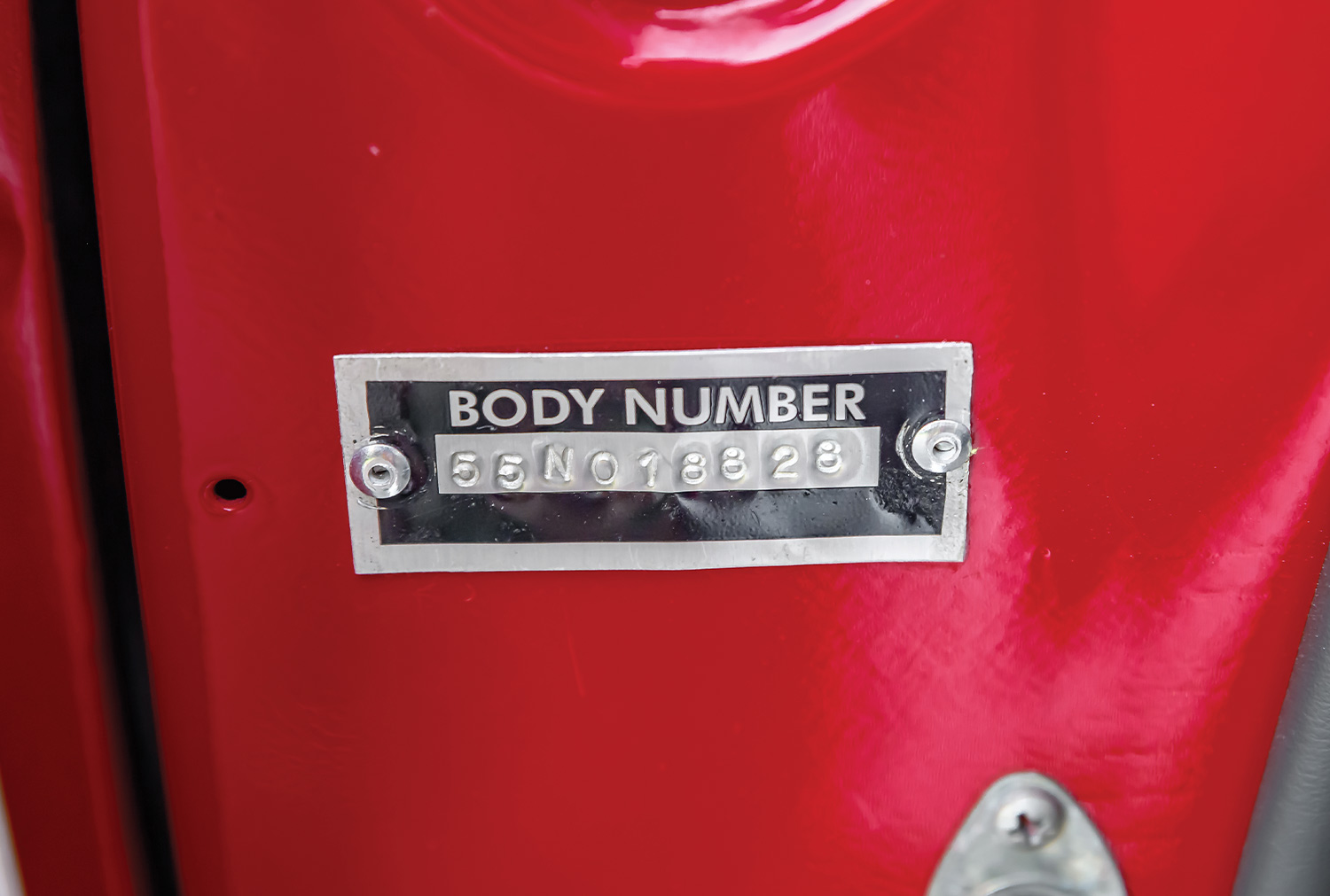
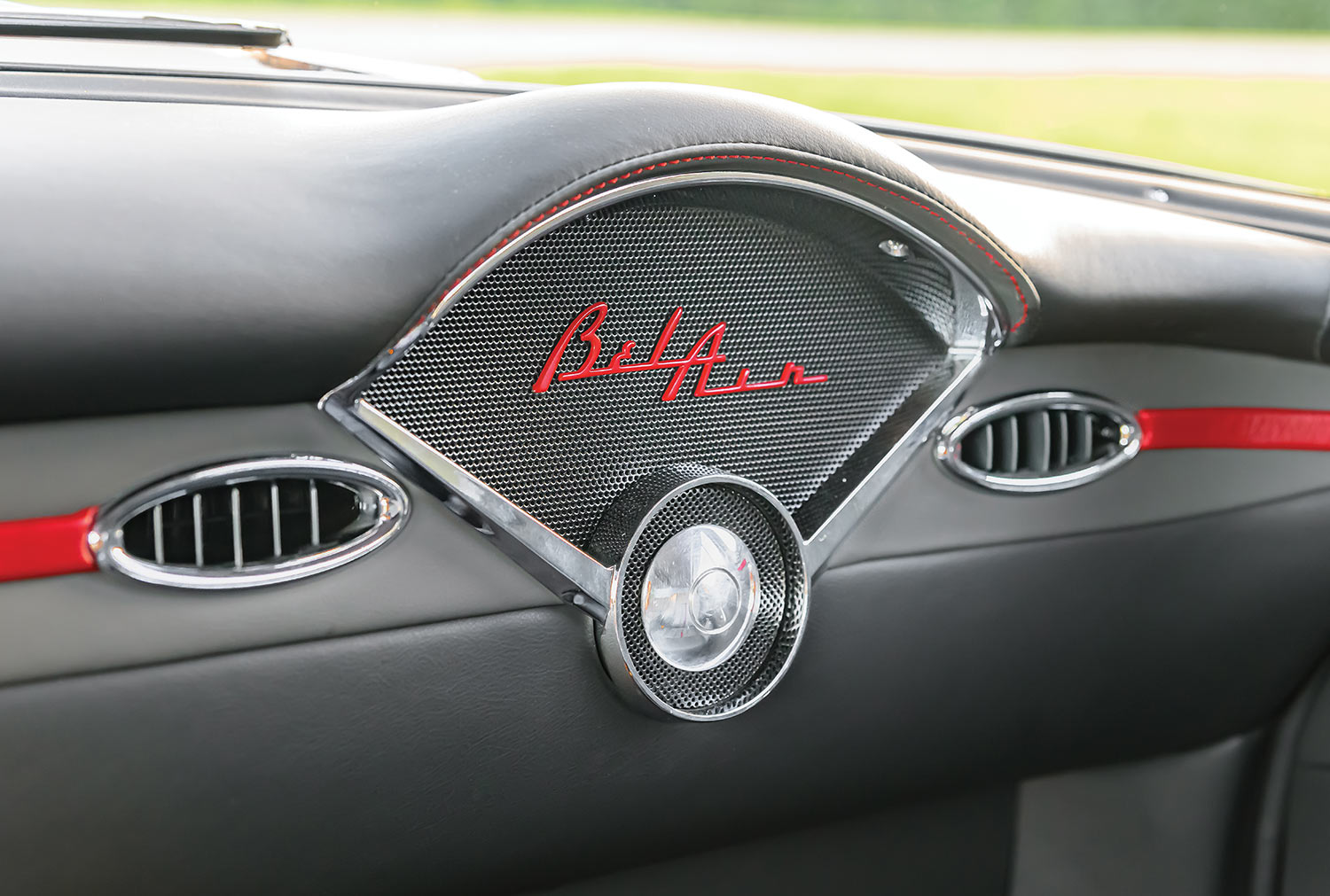
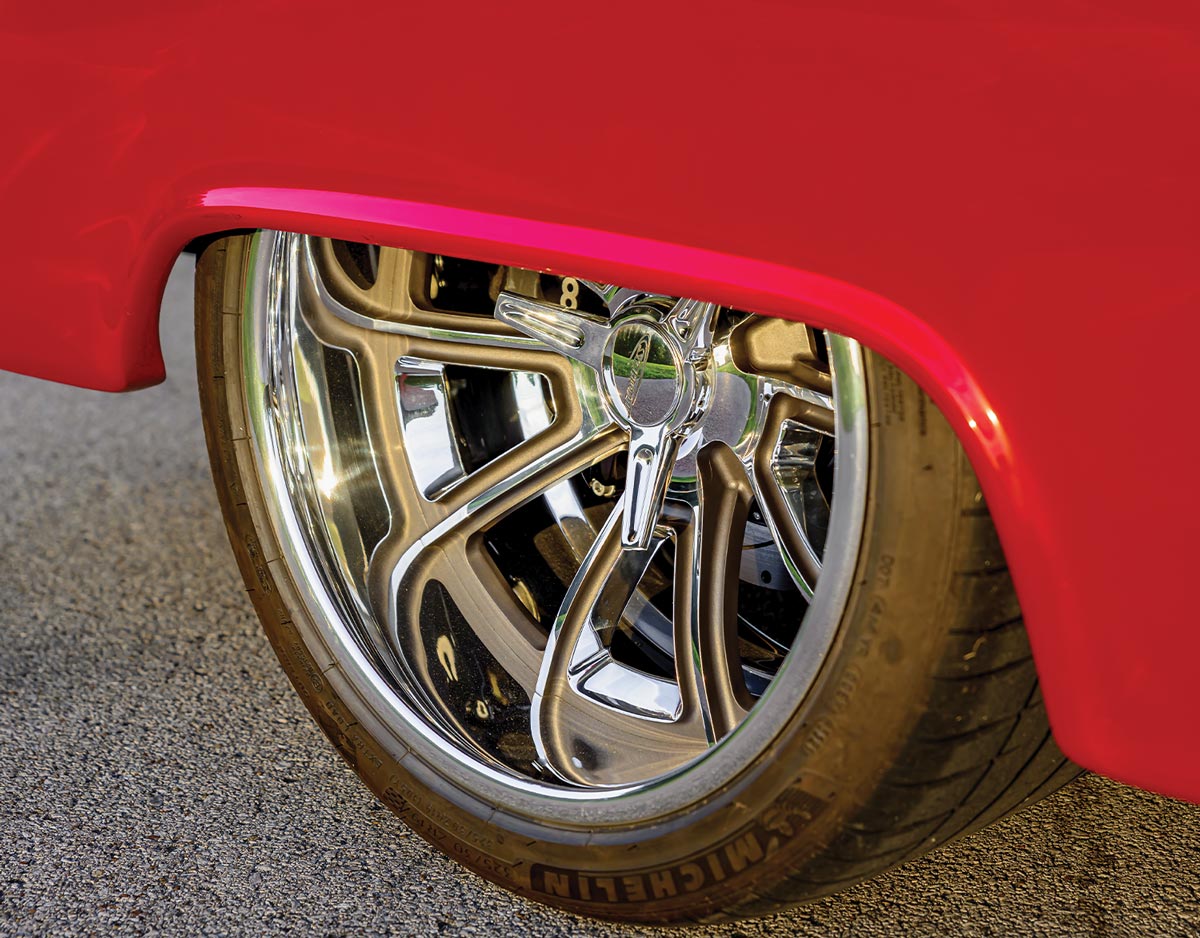
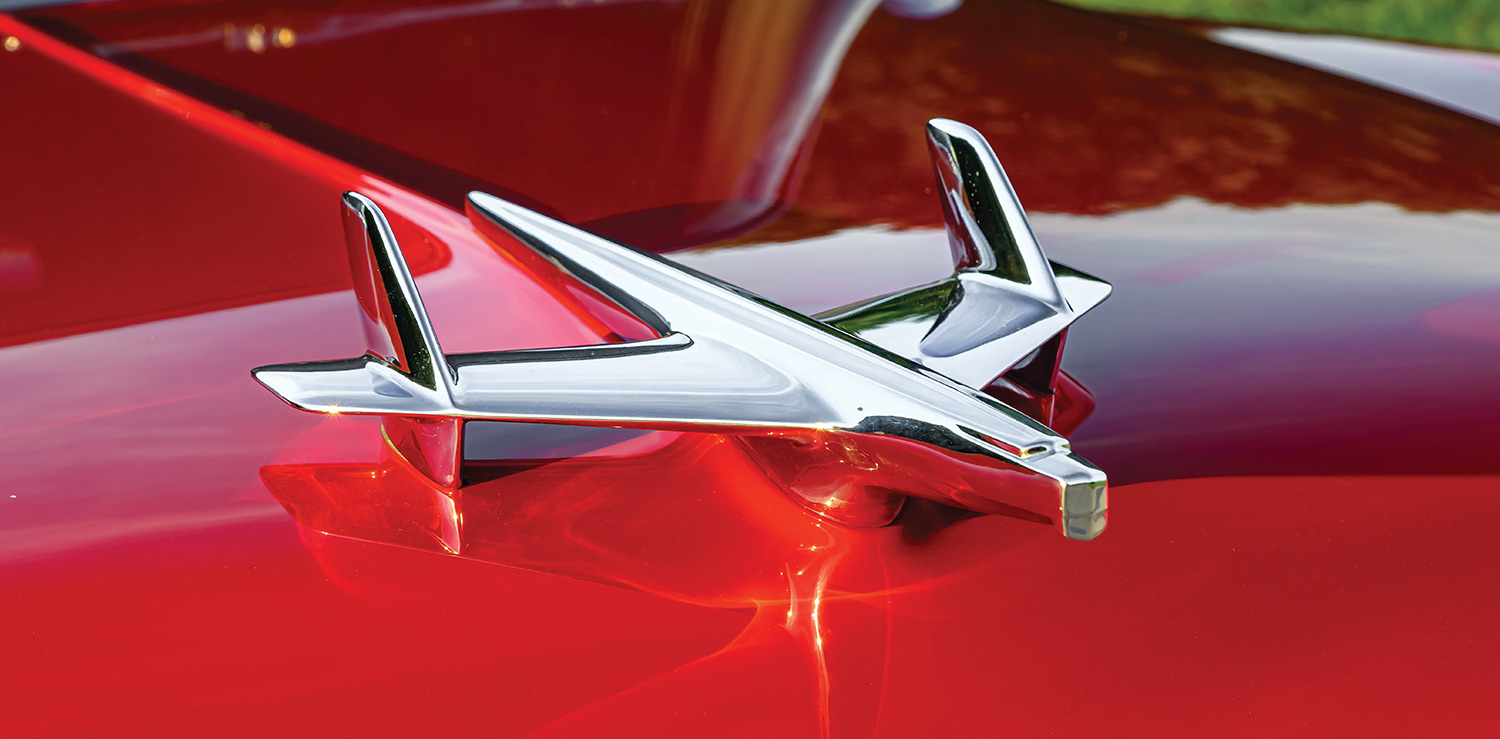
TECH
Vehicle: ’55 Chevrolet 210 Two-Door Sedan
Type: GM LSX V-10 (year unknown)
Displacement: 455 ci
Compression Ratio: 11.2:1
Bore: 4.005 inches
Stroke: 3.622 inches
Cylinder Heads: GM
Rotating Assembly: Custom crankshaft, CP-Carrillo pistons, standard bearings, and rings
Valvetrain: Stock LS valves and springs
Camshaft: Custom Comp cam spec’d by John Bewley at Full Proof Performance
Intake/Throttle Body: Custom Edelbrock Pro-Flo XT
Induction: Naturally aspirated
Fuel Injection: MaxxECU PRO
Assembly: Michael Rudd of Rudd Racing Engines (Lone Grove, OK)
Exhaust: Stewy’s Speed Shop 17/8-inch stainless headers, 3-inch stainless pipe, Borla Pro XS mufflers
Ancillaries: Hot Rods by Dean radiator, Holley Mid-Mount Serpentine Accessory Drive, MaxxECU PRO ignition, FireCore50 wires, Swiftek Engineering custom billet parts including valve covers, Rick’s Tanks 22-gallon stainless tank
Output: 700 hp at 7,000 rpm, 615 lb-ft at 4,800 rpm
Transmission: ’20 GM 4L85E
Torque Converter: Circle D Billet, 3,500 stall
Rear Axle: Ford 9-inch, Currie Truetrac, Currie axles, 3.70:1 gear ratio
Frame: Nerd Rods 2×4 boxed frame, custom engine mounts, full-custom crossmember
Rear Suspension: Triangulated four-link, QA1 single-adjustable coilovers
Brakes: Wilwood four-wheel disc, 14-inch front rotors with six-piston calipers, 14-inch rear rotors with four-piston calipers
Master Cylinder: Wilwood 7/8-inch Tandem
Wheels: Schott wheels (Throttle); 18×8 front, 19×12 rear
Tires: 245/40ZR18 front, 325/30R19 rear; Michelin Pilot Sport 4 S
Upholstery: Gray leather, Ron Mangus (Yucaipa, CA)
Carpet: Light gray
Seats: ’06 Pontiac GTO, custom leather
Door Panels: Custom leather
Pedals: Kugel Komponents/Lokar Performance
Steering: Ididit column, Budnik steering wheel
Console: Custom fabbed by Mangus
Shifter: Cadillac
Stereo: Pioneer DMH-341EX head unit, with Pioneer 6-inch front speakers and 6×9-inch rear speakers
Dash: Full leather-wrapped, Lokar air vents, Switch Pros power panel
Instrumentation: Dakota Digital HDX
HVAC: Vintage Air with Dakota Digital controller
Wiring: Speedway Motors
Bodywork: Darrin Gartrell and Gene Smith, Covington Customs
Paint: PPG black/red
Trim: Danchuk, Lokar Performance door handles
Bumpers: Danchuk
Hood Hinges: Billet Specialties
Lights: United Pacific